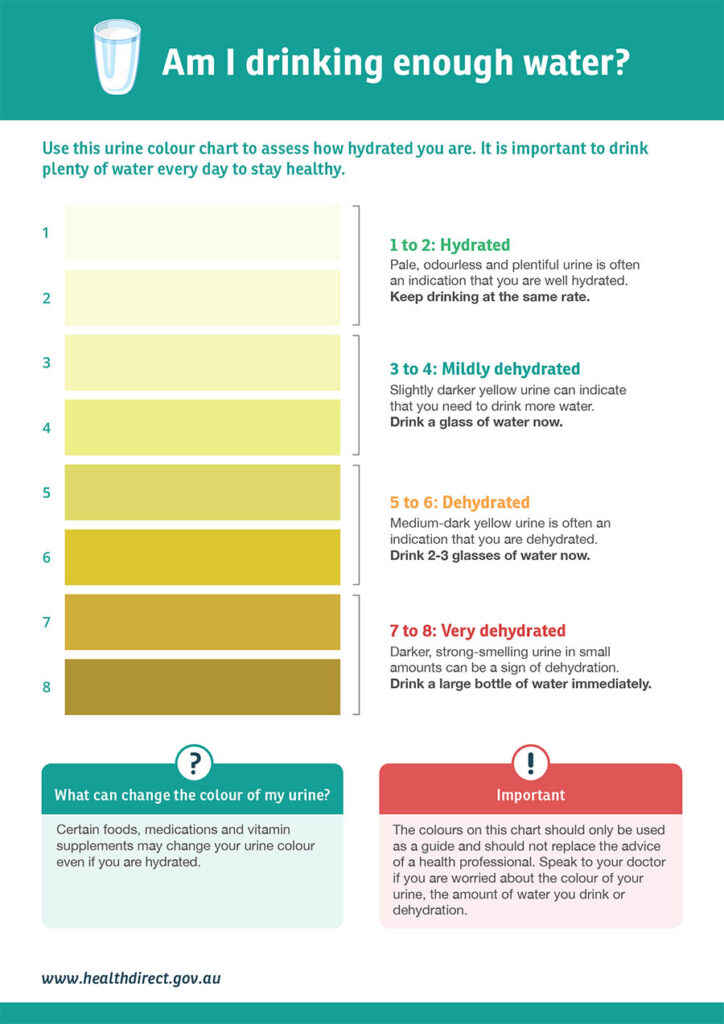Hydration and hiking
Water, water, everywhere
Our bodies need certain things to survive; air, food and water being the main ones. While its possible to go without food for extended periods (30-40 days), water is a whole different matter. It’s impossible to overstate the importance of water from a health perspective, not just on a day to day basis but also when we are hiking. At home we tend to take the availability of water for granted – we walk to the tap, the fridge, or if we are out and about the store, and drink as we need. Dehydration at its worst can be fatal. It’s generally accepted that the average human can survive around three days without water but the actual period will vary depending on your physical make up and environmental factors.
While dehydration is probably the main consideration for most people another less common but equally serious issue is ‘Over-hydration’ particularly when hiking in the tropics.
In this article we provide a brief overview of the health issues associated with incorrect hydration along with prevention strategies.
Dehydration
Dehydration occurs when more fluids leave the body than enter. It can be fairly minor at best or life threatening at worst.
Signs and symptoms
The signs and symptoms of dehydration will vary from individual to individual as well as the severity of the dehydration.
- Mild to moderate dehydration
- Thirsty
- Dry mouth, lips and tongue
- Headache
- Dark coloured urine
- Often associated with limited urine output
- Dizziness or light-headedness, particularly when standing up
If you have severe dehydration, you might:
- Be extremely thirsty
- Have a very dry mouth
- Increased breathing rate
- Have a fast heart rate and low blood pressure
- Have a fever
- Produce little or no urine
- Be irritable, drowsy or confused
Over-hydration
Over-hydration is something the majority of people don’t consider and in Australia’s harsh climate, you don’t tend to hear too much about it. Typically this is far less common than dehydration and usually effects endurance athletes, military involved in training exercises, and surprise surprise hikers, particularly in tropical areas. Having said that there have been a number of cases where hikers have died from overhydration so it is something worth knowing about.
Over-hydration occurs when you drink too much fluid with the end result being a change to your blood chemistry.
Signs and symptoms of over hydration
Mild to moderate over hydration:
- Nausea and vomiting
- Headache
- Changes in mental state such as confusion or disorientation
If untreated more severe issues can occur, including:
- Muscle weakness, spasms or cramps
- Seizures
- Unconsciousness
- Coma
How much should we drink?
In our everyday lives the average water consumption for an adult should be around 2-2.5 litre per day. When we are out hiking this figure will be higher and will vary widely – how much you need will depend on how hard you are pushing yourself and the environmental conditions.
Probably the easiest way to determine correct hydration is through urine colour. This is a topic that many people usually feel squeamish discussing but the chart below from the Australian Government provides a good indicator to help determine whether you are dehydrated or not.
The symptoms identified are also useful however once you have them you are already dehydrated and prevention rather than cure is the best option.
- As a rule of thumb in cold weather I work on consuming 1litre per 10km of walking which also translates to around 1 litre per 2.5 hours
- In hot conditions (‘hot’ is a subjective term) this ramps up to around 1 litre per hour
The hotter the conditions and the more you exert yourself, the more your water intake needs to increase.

Urine Colour Chart from the Australian Government source: https://www.healthdirect.gov.au/urine-colour-chart
Final thoughts
While dehydration is probably going to be the main consideration for most hikers in Australia, or for that matter in the world, the issue off overhydration can’t be dismissed. There is a degree of crossover between the signs and symptoms of dehydration and over-hydration listed above and rather than making the assumption about what the issue is, use your Urine Colour Chart as your main guide. If you are hiking with other people it’s worthwhile talking to them about how much water they are consuming. While everyone is different a given group of hikers will be using around the same amount of water and you your consumption is widely different from everyone else it will at the last make you think about what’s going on.
References
- https://www.healthdirect.gov.au/dehydration
- https://www.smh.com.au/national/over-hydration-hazard-for-kokoda-hikers-20110306-1bj97.html
- https://www.healthline.com/health/overhydration#symptoms